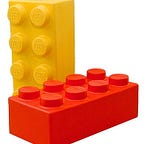Nadia Botello: The Future will not arrive on a screen.
Breaking the Sound Barrier
“Your eyes lie to you! What we see is literally upside-down in our brain.”
I can tell from the very beginning of our chat that Nadia is a passionate advocate for one human sense in particular. And yes, you guessed it, it’s not eyesight.
Nadia works as a Product Lead at Accenture Interactive in Austin, TX, but what she does at Accenture is just the beginning of getting to know her.
“I was (and still am) a professional sound artist, audio engineer, and composer. I have an MFA in Music/Sound from Bard College and have exhibited extensively around the intersections of art, music/sound, science, and technology.
I’ve frequently lectured on sound to graduate programs; including at the University of Pennsylvania, Columbia University, Johns Hopkins, and others.
“This year, I was invited to speak at Yale, and world premiered a documentary on the history of women in electronic music that I consulted on and that I was featured in called “Sisters with Transistors”.
And, yes, you guessed it again, Nadia’s favorite sense is hearing.
“Sound is our most important perception. Besides being our fastest sense, humans have always had music and sound in our lives, and they play an essential role in our evolution.”
Dr. Jay Schulkin from the Department of Neuroscience at Georgetown University believes that “Music is a core human experience and generative processes reflect cognitive capabilities. Music is often functional because it is something that can promote human well-being by facilitating human contact, human meaning, and human imagination of possibilities, tying it to our social instincts. Music intersects with cultural boundaries, facilitating our “social self” by linking our shared experiences and intentions.”
Nadia’s background as a composer and audio engineer helps her see the world as a collection of sounds and silences. (Indeed, silence is also sound).
It might be hard to imagine seeing the world like that for someone without the music and audio background Nadia has, but we can try to see the world the way she does for a few moments, especially when it comes to the opportunities and implications for the future of sound.
“Sound can help us design any experience, from the hospitality and medical industries to retail and branding. Of course, we can design what a brand sounds like, but the exciting part is when we get to design the experience of life. The way we do with photographs. Imagine having customized sounds and music linked to major life events such as your birthday, your wedding day, moving into a new home. Even better, everyday moments could be optimized by having their own sonic identities, like when today we get a message on our smartphone or a “like” on a photo, and we hear a “ding”.
What if all these opportunities were part of a conscious design to make our lives sound better?
Here is an example of what Mastercard has done to create its sonic identity.
“Sound contributes to creating the soundtrack of your life. And in that sense, in a world full of distractions and noise, screens and text, designed audio becomes an escape, a relief from all the clutter.”
“We will hear the future before we see it.
“Think about the popularity of podcasts, smart speakers, headphones, and streaming music platforms like Spotify. More and more people are canceling the noise around them. Our world is very loud.”
The New Yorker Magazine published recently an article titled: Is Noise Pollution the Next Big Public-Health Crisis? With this daring warning: “Studies have shown that people who live or work in loud environments are particularly susceptible to many alarming problems, including heart disease, high blood pressure, low birth weight, and all the physical, cognitive, and emotional issues that arise from being too distracted to focus on complex tasks and from never getting enough sleep.”
Perhaps we are used to the sounds of a dog barking, an airplane overflying, or a loud conversation in a busy restaurant. But Nadia believes that we can do better than just accept them as the soundtrack of our lives.
“In a constant tension between visuals and audio, what’s changed and new today compared to any other time in history is our attention span. We are overwhelmed! And audio, well-designed audio, intentional audio, can break through the clutter in a way an image can’t anymore.
The goal for Nadia is not to silence the world, but rather to listen more intentionally to the world. Rivers have sounds, mountains have sounds, cities and countries have been developing unique sounds for centuries. And each language occupies a unique space in the sound spectrum.
“For better or for worse, the true experimentation of sound is being done mainly by fine art and street art. Academia is also exploring new and exciting opportunities, followed by boutique studios and small firms who are creating the next generation of synthetic voices, branding audio, and sonic identities through games, movies and applications. The big firms with the means and resources to take sound to the next level are still playing catch up”
It’s still a visual world, though. 70% of an individual’s brain is dedicated to vision and their ability to process visual images.
But Nadia is convinced:
“The future won’t arrive on a screen!
